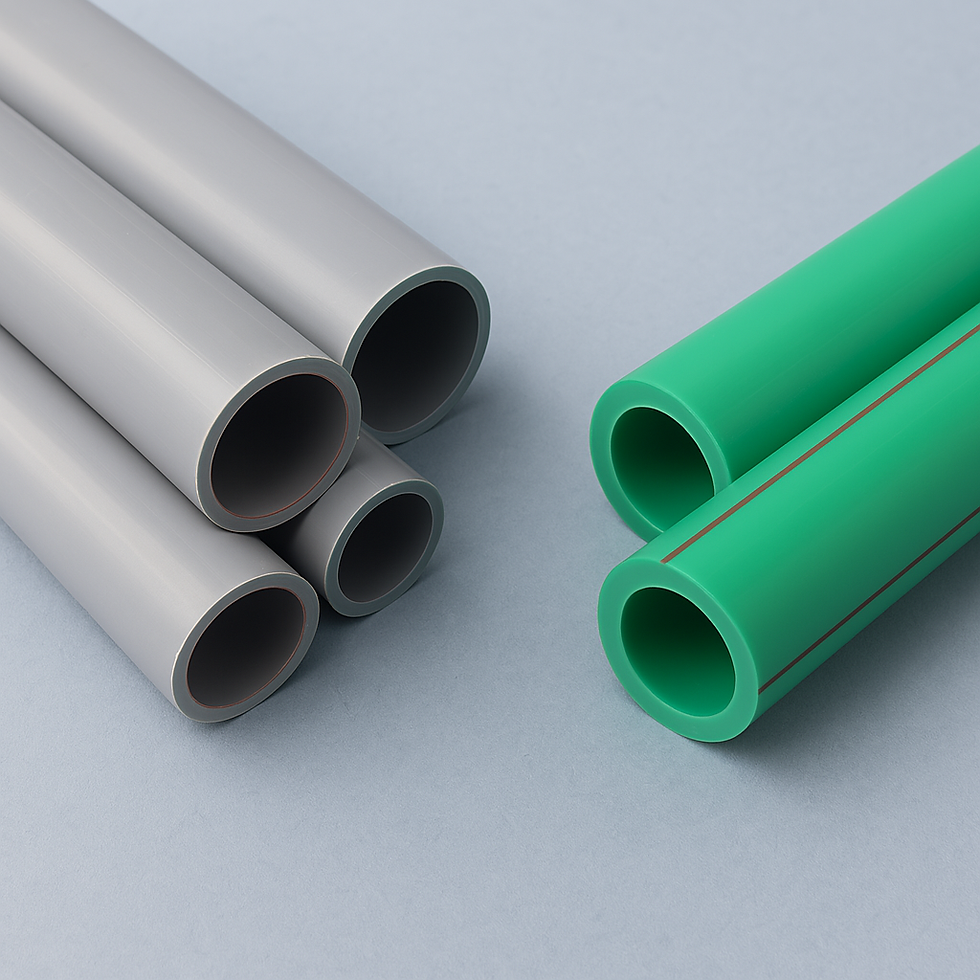HDPE Pipes: Advancing Sustainable Solutions for Modern Infrastructure
- Adamjee DuraBuilt
- Jul 27, 2023
- 4 min read

Introduction: Revolutionizing Modern Infrastructure
Modern infrastructure is changing as a result of creative solutions as the world recognizes the necessity of sustainability. High-Density Polyethylene (HDPE) pipes have become a driving factor in this change, changing how we tackle important development-related issues. HDPE pipes are establishing new standards for toughness, adaptability, and environmental responsibility in a variety of industrial applications, including water supply, sewage control, and a host of others. They are preferred over more traditional materials like metal and concrete due to their unmatched qualities and improved performance. With a seamless fusion of economic efficiency, long-term dependability, and environmental responsibility.
A more effective and environmentally responsible future is made possible by HDPE pipes, which are a resilient and long-lasting solution. We set out on a journey in this blog post to examine the numerous benefits and varied uses of HDPE pipes, emphasizing their crucial role in forming contemporary infrastructure and promoting environmental sustainability. Join us as we explore HDPE pipes and learn about the countless opportunities they present to move us toward a greener, more resilient future.
Environmental Sustainability and Recycling
The good effect HDPE pipes have on environmental sustainability is one of its most important benefits. High-density polyethylene, a recyclable plastic that can be created from recovered HDPE material, is the substance used to make HDPE pipes. By reducing the need for fresh raw materials, this recycling capability conserves precious resources and lessens the production's negative environmental effects. By using HDPE pipes for diverse uses, businesses and communities support the circular economy, which encourages the reuse and recycling of materials and encourages the construction of infrastructure that is more environmentally friendly.
The light weight of HDPE pipes offers further environmental advantages in addition to recycling. These pipes require less energy to transport and handle because of their lighter weight, which results in decreased logistics fuel usage and greenhouse gas emissions. This factor is especially important when taking into account large-scale infrastructure projects that call for a sizable number of pipes. HDPE pipes' smaller carbon footprint during shipping and distribution increases their environmental appeal.
Corrosion Resistance and Longevity
HDPE pipes are extremely ideal for a variety of applications, including water supply, sewage systems, and industrial pipelines, because of their exceptional corrosion resistance. Since HDPE pipes are resistant to rust and corrosion, they have a longer service life and require less maintenance than conventional metal pipes, which are over time susceptible to these problems. In settings with aggressive chemicals or extreme conditions, where metal pipes may fail or decay, HDPE pipes' corrosion resistance is especially helpful. Long-term economic savings and diminished environmental effect result from HDPE pipes' durability. HDPE pipes last longer than other materials, which means they need to be replaced less frequently. This means utilizing and recycling fewer materials, which reduces waste production and promotes a more sustainable approach to maintaining infrastructure.
Leak-Free Joints and Reliable Performance
Fusion joints are a feature of HDPE pipe design, resulting in a pipeline system that is seamless and leak-free. Fusion welding eliminates the need for additional joints and lowers the possibility of leaks or weak spots by forming solid, monolithic connections between pipe sections. In applications involving water supply, leak-free couplings are especially important because they prevent water loss, raise operational expenses, and cause environmental issues.
The HDPE pipes' dependability goes beyond their leak-free connections. Extreme temperatures and soil movement are just two of the environmental situations that these pipes have been shown to function incredibly well in. A stable and reliable pipeline system is ensured by its resistance to external pressures and capacity to preserve structural integrity under stress, which adds to the overall security and effectiveness of infrastructure networks.
Flexibility and Ease of Installation
Due to their excellent flexibility, HDPE pipes are highly adaptable and simple to install in a variety of applications. This versatility is a big plus, especially when working on projects that need complicated ground motions and terrain. HDPE pipes can flex and react to changes in the landscape, unlike stiff materials like metal or concrete pipes, enabling smoother installation along uneven ground and around obstructions.
Additionally essential to their resilience to ground movements and outside influences is HDPE pipes' flexibility. Without jeopardizing their structural integrity, they can adapt to geological changes such as subsidence and soil settling. Because of their resilience to shifting soil conditions, HDPE pipes are a dependable option for infrastructure projects in seismically active or ground-shifting regions.
Cost-Effectiveness
Compared to other materials that are frequently used in industrial applications, HDPE pipes provide substantial cost advantages. Over time, their durability and reliability lead to lower maintenance and replacement expenses. HDPE pipes can last for several decades with no need for maintenance or replacement, saving businesses and governments money over time.
HDPE pipes are even more affordable due to their lightweight design and ease of installation. They are an economical option for large-scale projects due to their quick and simple installation process, which lowers personnel and equipment costs. Furthermore, the corrosion resistance of HDPE pipes reduces the requirement for pricey protective coatings, significantly lowering project costs.
Conclusion
HDPE pipes have become a leader in the effort to create a greener and more resilient future as the globe embraces sustainable infrastructure development solutions. HDPE pipes are a significant tool in improving modern infrastructure and protecting the environment because of their remarkable durability, corrosion resistance, and leak-free performance, as well as their environmental sustainability and simplicity of installation. The widespread use of HDPE pipes will surely continue to fuel sustainable solutions and catapult infrastructure development to new heights as more sectors become aware of the many advantages they offer.












Comments